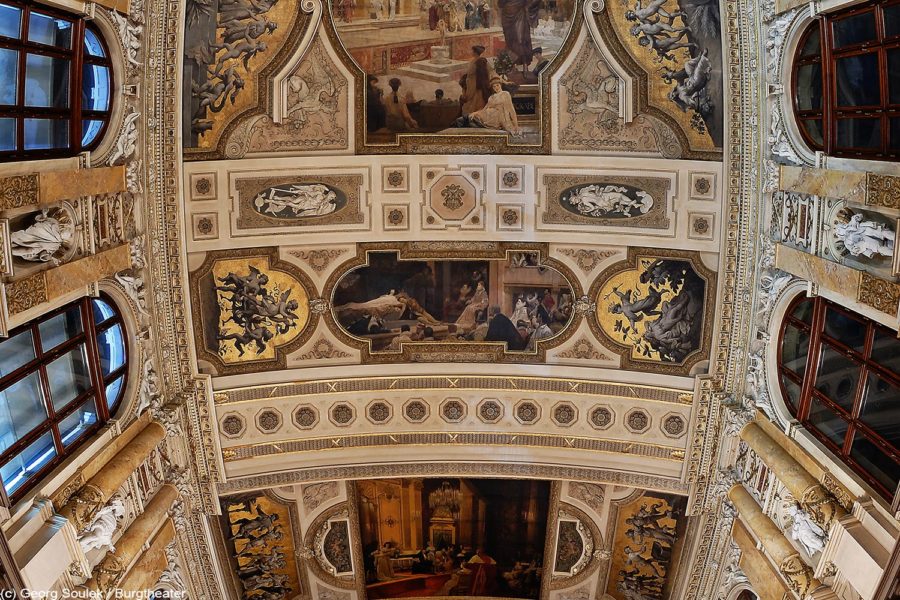Ambassador to Austria and UK Permanent Representative to the United Nations and other International Organisations in Vienna
Part of UK in Austria
16th January 2020 Vienna, Austria
Great theatres: in London and Vienna 
Where in Vienna can you find a portrait of Elizabeth the First, which features also Romeo; Juliet; and the only known self-portrait of Gustav Klimt?
A wise person has brought to my attention the depiction by Gustav Klimt on the ceiling of the Burgtheater, Vienna’s sumptuous theatre, of Shakespeare’s “Globe” Theatre. A painting of a theatre, on the ceiling of a theatre. Meta.
When you look at the detail, it gets even better. You can examine the detail in cool and stupendous close-up at this co-operation between Google and the Burgtheater, (click 19 times to the right).
Thanks to this digital technology, you see the painting at the link in far more detail than would be possible with the naked eye, from the steps below (I know, I’ve tried). You can see:
- a depiction of the “Globe” theatre in London in Shakespeare’s heyday, with “Romeo and Juliet” apparently being watched by Queen Elizabeth the First;
- a close-up of the “star-crossed lovers”, Romeo and Juliet, themselves. Romeo is grieving because he believes Juliet is dead. The first recorded use of the phrase “star-crossed”, meaning ill-fated, or doomed, was in “Romeo and Juliet”;
- a depiction of Queen Elizabeth (probably) and other nobility watching the play – practically sitting on the stage;
- images of the rest of the audience, standing – as they still do at the stunning reconstruction of “Shakespeare’s Globe” on the South Bank of London today;
- a close-up of Gustav Klimt himself – his only self-portrait – depicted as an Elizabethan gentleman in the audience. With him in the audience at the “Globe” are his brother Ernst, and Franz Matsch, a fellow Jugendstil artist.
I must admit the tragic end of “Romeo and Juliet” always gives me a frisson of pain and pleasure.
Other scenes above the staircase include an ancient theatre scene by Franz Matsch – Antigone, by Sophocles, performed in Athens’ Theatre of Dionysus – and Moliere starring in “Le Malade Imaginaire” – a play I studied for my French “A” level – at the Court of Louis XIV.
Next time you visit the Burgtheater and climb the stairs on the Volksgartenseite, take a moment to look at the paintings above your head. A wonderful symbol of Europe’s artistic heritage.









